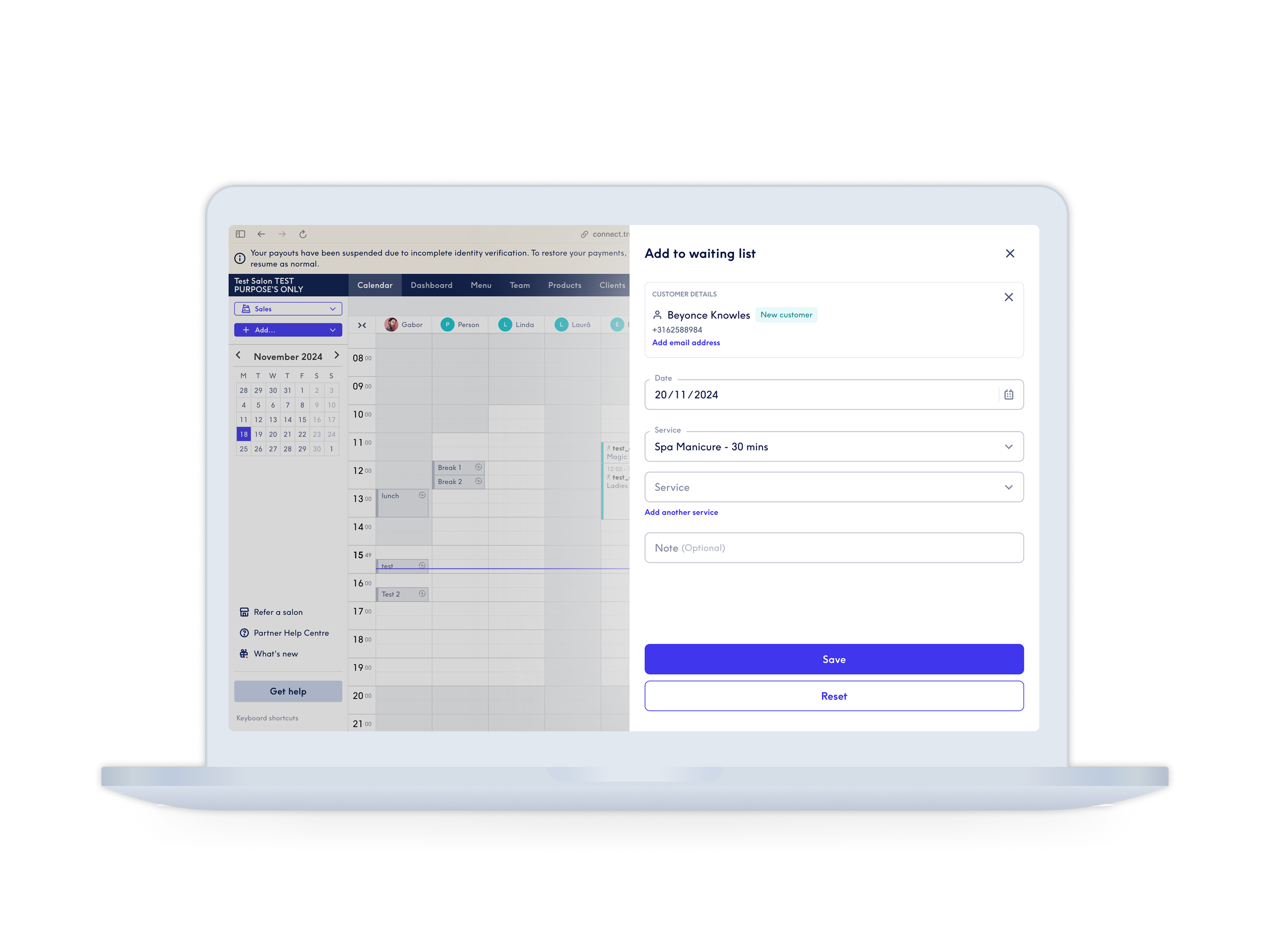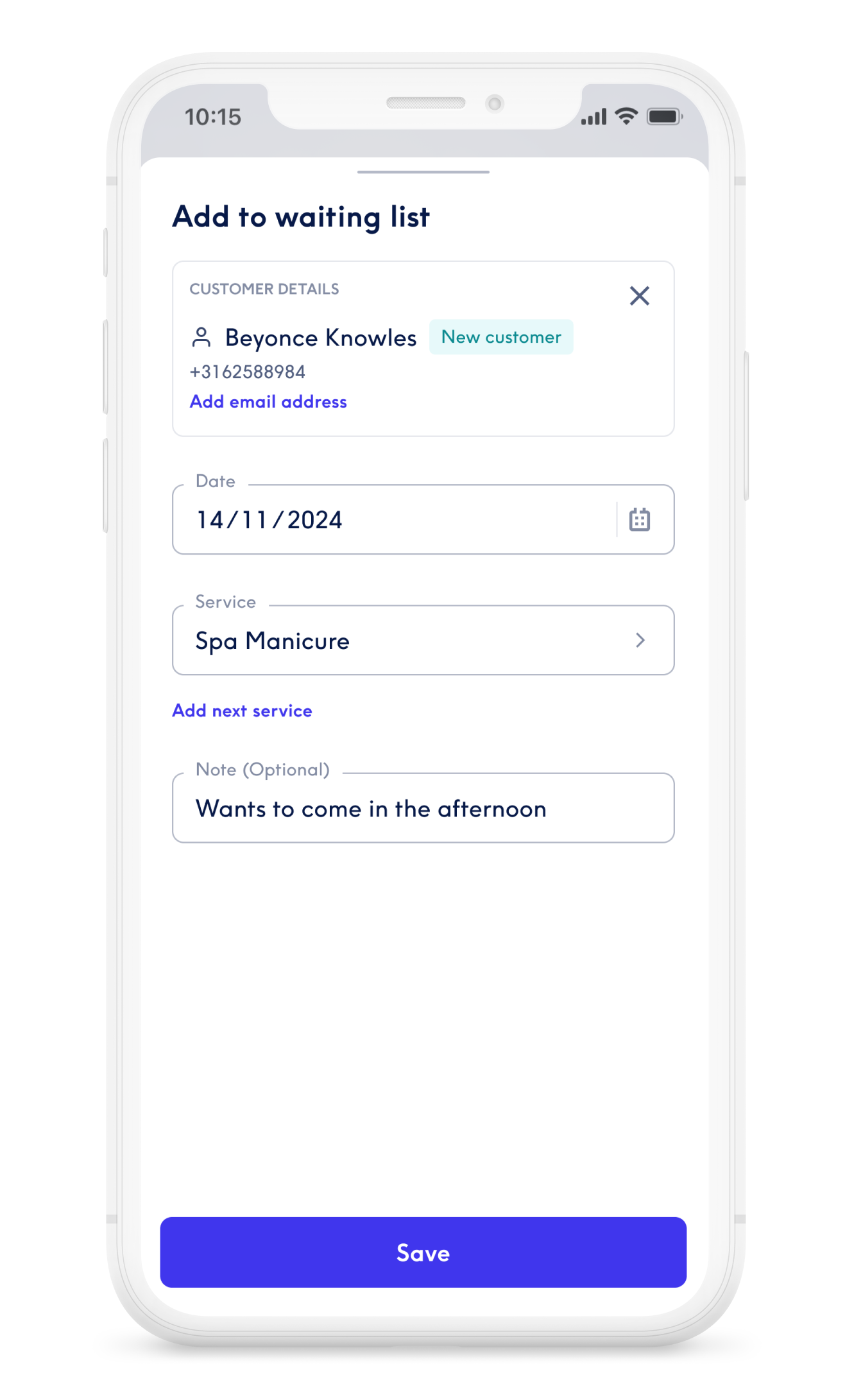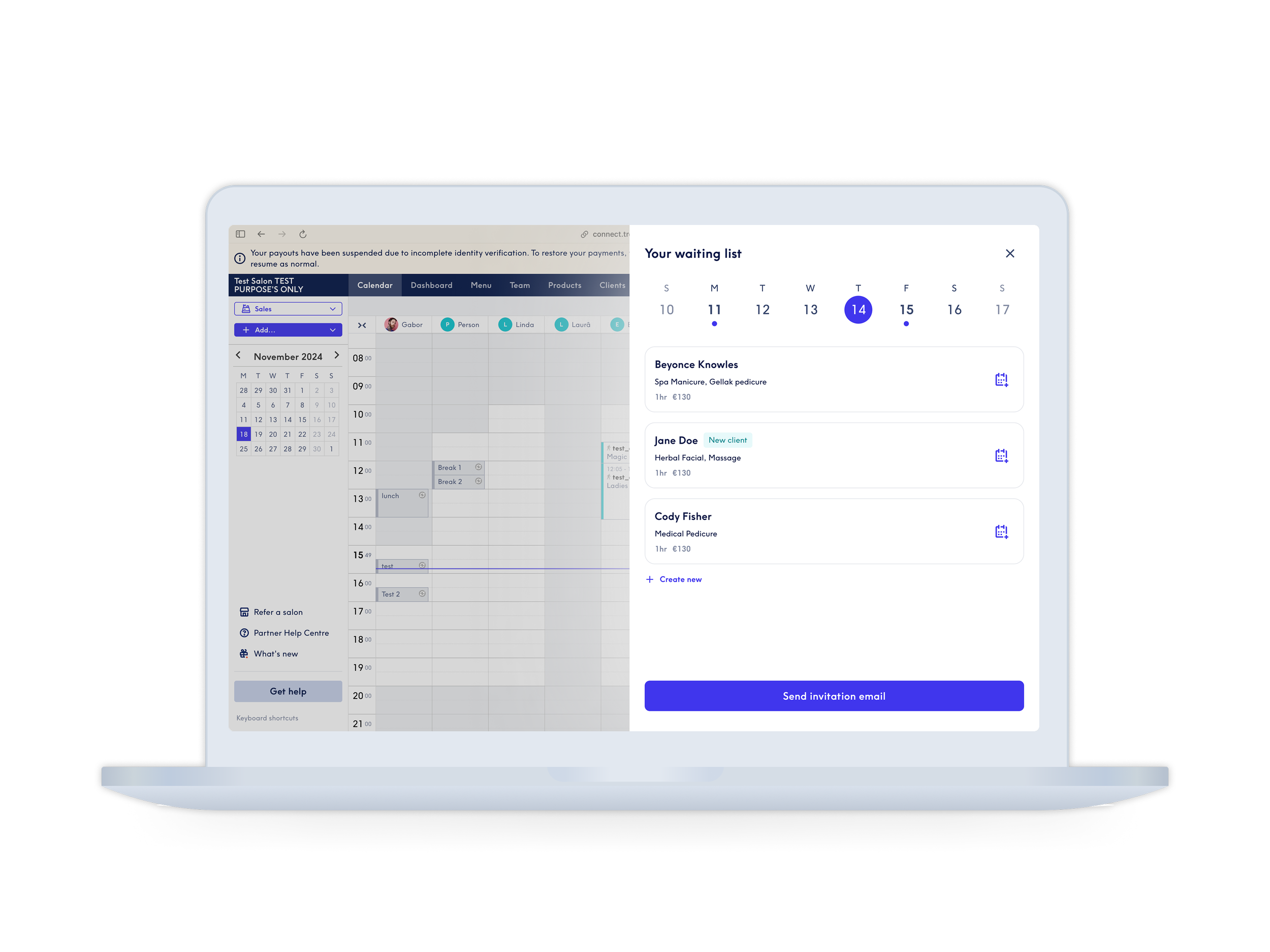Waiting List MVP
Closing the feature gap
2025 Q1
Figma, MixPanel



OVERVIEW
The Waiting List is a core feature that exists in most competitor calendar management tools, but not in Connect due to legacy code and long release times. We built a waiting list feature from scratch in Connect, however, its development was informed by research and insights gathered from Salonized, another Treatwell product.
My Role
As the UX Designer on this project, I:
Conducted user research to understand pain points and salon workflows.
Led a MOVE process to structure problem-solving and align stakeholders.
Designed the end-to-end user flows, wireframes, and prototypes.
Iterated on feedback post-launch to improve the user experience.
The Challenge
Early feedback from Salonized users revealed key pain points that informed the design of Treatwell Connect’s waitlist feature:
Lack of automation: Salons had to manually track and manage waitlist requests, increasing administrative work.
Unclear communication: Customers were unsure whether joining the waitlist meant they had an appointment.
Rigid settings: Salons needed more control over when and how the waitlist functioned.
Low visibility: Limited insights into waitlist status made it harder for salons to use effectively.
To address this, we initiated a MOVE—a structured alternative to traditional sprints, focusing on defining the problem, setting a clear goal, brainstorming solutions, and tracking outcomes.
!spoiler!
OUTCOME
MVP successfully launched in Treatwell Connect, with immediate adoption by salons.
Digital waitlist management, replacing manual pen/paper work.
Increased customer engagement, leading to higher conversion from waitlist to booking.




The Journey
1. Research & Discovery
User Insights
To better understand how salons used the waitlist, I created and distributed a survey to Salonized users with high rates of waitlist usage. The responses provided valuable insights into real-world usage patterns, pain points, and expectations, which directly influenced the feature development for Treatwell Connect.
Key findings from the survey included:
Salons used waitlists primarily for last-minute cancellations, not just fully booked days.
Many salons manually contacted customers on the waitlist, increasing admin work.
Customers expected automatic confirmations rather than manual approvals from the salon.
Limited customization options made it difficult for salons to adapt the feature to their workflow.
Using data from Salonized Lab and the survey responses, we identified key insights that shaped the development of the waitlist feature in Treatwell Connect:
Larger salons (5+ employees) with frequent scheduling gaps benefited most from a waitlist system.
Manicure, beauty, and barber businesses had the highest demand for last-minute appointments.
Customers with urgent service needs (e.g., weddings, travel, special events) were the most likely to use a waitlist.
User Pain Points
Salons struggled with maintenance of the waiting list, requesting better default settings.
Salons wanted granular control over which services and time slots could be waitlisted.
Lack of automation led to missed opportunities to fill open slots quickly.
2. Solution Exploration
Through brainstorming sessions, user journey mapping, and a structured HMW (How Might We) session, we explored possible improvements:
Automated notifications when an open slot became available.
Clearer messaging in emails and booking screens to set user expectations.
Advanced settings to allow salons to customize waitlist rules.
Improved dashboard visibility for tracking and managing waitlist entries.
3. Design & Implementation
Through storymapping and prioritization, we categorized must-haves and nice to haves. We launched the MVP, keeping in mind opportunities we want to build for in the future.
